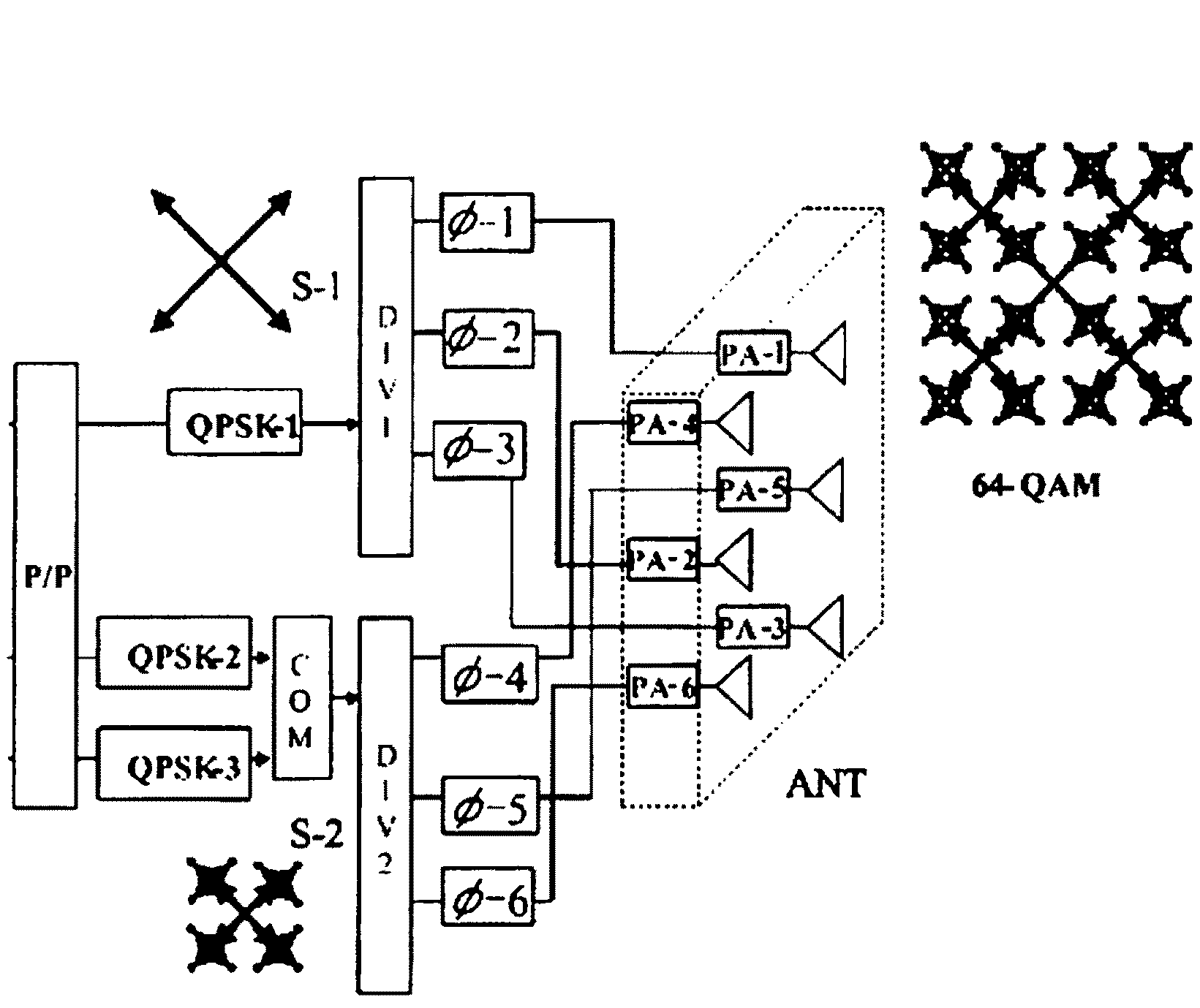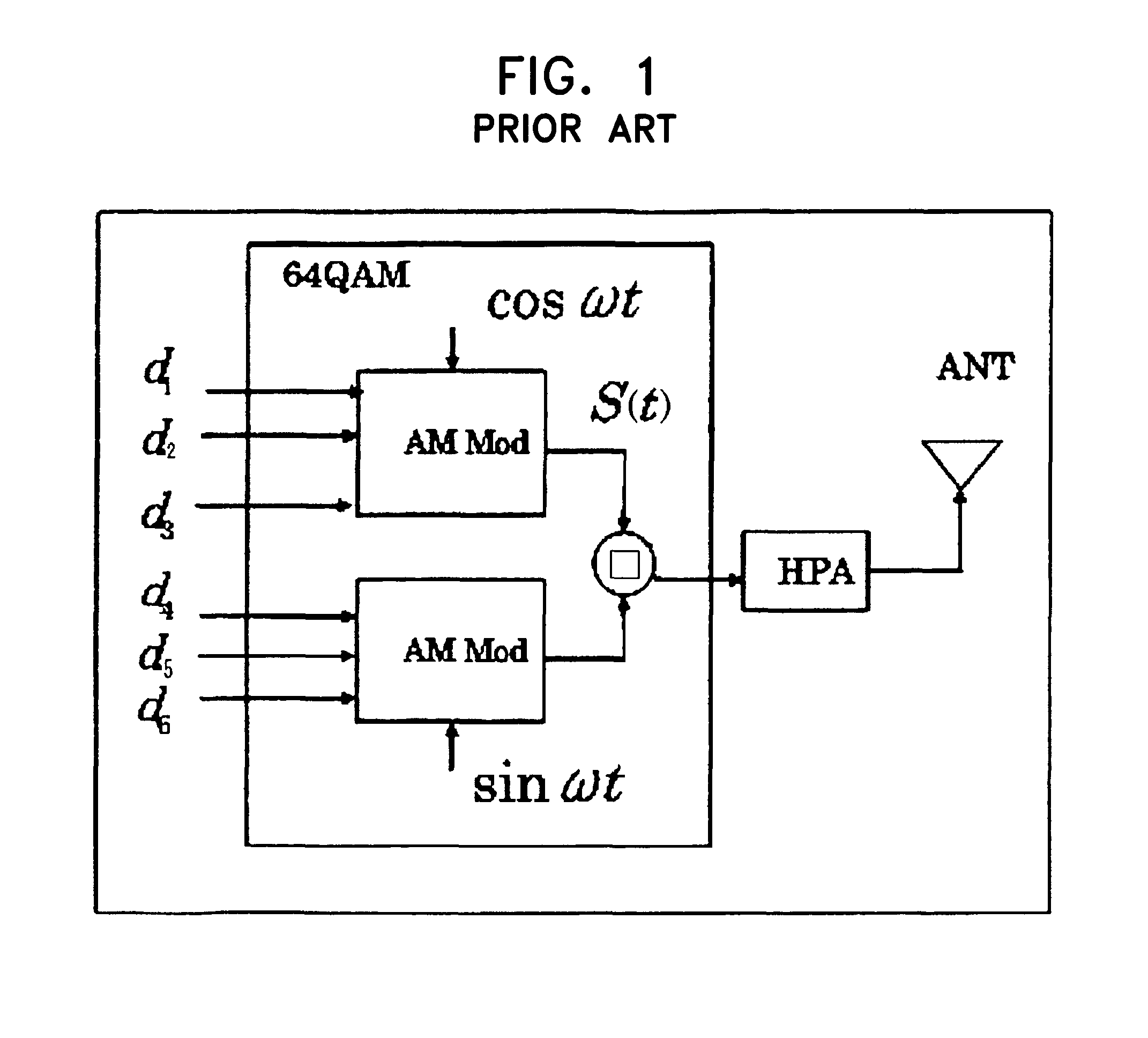Multi-value modulation/demodulation method and multi-value modulation/demodulation device
a multi-value modulation and demodulation technology, applied in the field of multi-value modulation/demodulation and multi-value modulation/demodulation devices, can solve the problems of limited frequency band, difficult identification of symbols, and finite resources of electric waves, so as to reduce power consumption, reduce power supply capacity, and increase the efficiency of a plurality of power amplifiers
- Summary
- Abstract
- Description
- Claims
- Application Information
AI Technical Summary
Benefits of technology
Problems solved by technology
Method used
Image
Examples
example 1
[0037]FIG. 17 shows a relationship between an error rate and an energy-noise power density ratio (Eb / No) per bit when each power amplifier is set to an operation point of output back-off 0 dB, 3 dB, 5 dB, or 7 dB in the conventional technology. For reference, linear characteristics as an ideal state are also shown. A reed solomon error correction code and a convolution error correction code having a ½ coding ratio are applied to the characteristics. When the output back-off is increased, transmission characteristics are improved, and the error rate is lowered. However, the output and the power efficiency are simultaneously reduced with the output back-off.
[0038]FIG. 18 shows transmission characteristics with a phase error and a gain error being used as parameters when modulation has a uniform signal arrangement and demodulation does not have a superposion error estimating function in the structure of the modulating section depicted in FIG. 13. The error rate is increased based on th...
example 2
[0039]Although 64-QAM is explained in Example 1, a constitution and others applied to N=4, i.e., 256(=28)−valued QAM can be likewise adopted. In this example, outputs from a QPSK-3 and a QPSK-4 are combined by a 6-dB directional coupler DC-1 to obtain S34. Moreover, an output from a QPSK-2 is coupled with S34 by a directional coupler DC-2 to obtain S234. Additionally, the outputs S1 and S234 are superposed and combined in a space by using two systems of antennas. Therefore, in this embodiment, the same effect as that of 64-QAM can be expected.
example 3
[0040]Meanwhile, as already explained with reference to FIGS. 9 and 10, in the conventional combining method using a plurality of antennas, when the path difference d·sin θ occurs between the lengths of the propagation paths to the reception points in the service area SA due to the distance d between the two antennas, phases of the two signal waves at the reception points in the service area SA are different from each other except for the case where the angle θ=0, and a vector after combination differs depending on each reception point since the two phases differ in dependence on the angle θ. FIG. 22 shows a structure in which a quadri-phase shift keying (QPSK) wave corresponding to FIG. 12 and a 16-valued quadrature amplitude modulation (16-QAM) wave are superposed and combined in a space to realize 64-QAM. FIG. 23 shows a signal spatial arrangement view of 64-QAM (corresponding to 64-QAM on the right-hand side in FIG. 12) in an ideal state where two antenna gains have no phase dif...
PUM
 Login to View More
Login to View More Abstract
Description
Claims
Application Information
 Login to View More
Login to View More - R&D
- Intellectual Property
- Life Sciences
- Materials
- Tech Scout
- Unparalleled Data Quality
- Higher Quality Content
- 60% Fewer Hallucinations
Browse by: Latest US Patents, China's latest patents, Technical Efficacy Thesaurus, Application Domain, Technology Topic, Popular Technical Reports.
© 2025 PatSnap. All rights reserved.Legal|Privacy policy|Modern Slavery Act Transparency Statement|Sitemap|About US| Contact US: help@patsnap.com



